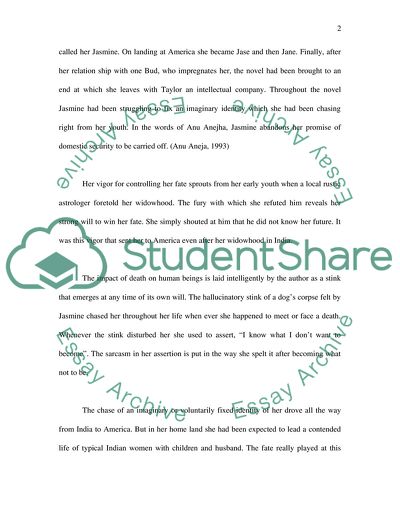Cite this document
(“Coorelation between Fate, Identity and Destiny in Mukherjee's Jasmine Essay”, n.d.)
Coorelation between Fate, Identity and Destiny in Mukherjee's Jasmine Essay. Retrieved from https://studentshare.org/miscellaneous/1541764-coorelation-between-fate-identity-and-destiny-in-mukherjees-jasmine
Coorelation between Fate, Identity and Destiny in Mukherjee's Jasmine Essay. Retrieved from https://studentshare.org/miscellaneous/1541764-coorelation-between-fate-identity-and-destiny-in-mukherjees-jasmine
(Coorelation Between Fate, Identity and Destiny in Mukherjee'S Jasmine Essay)
Coorelation Between Fate, Identity and Destiny in Mukherjee'S Jasmine Essay. https://studentshare.org/miscellaneous/1541764-coorelation-between-fate-identity-and-destiny-in-mukherjees-jasmine.
Coorelation Between Fate, Identity and Destiny in Mukherjee'S Jasmine Essay. https://studentshare.org/miscellaneous/1541764-coorelation-between-fate-identity-and-destiny-in-mukherjees-jasmine.
“Coorelation Between Fate, Identity and Destiny in Mukherjee'S Jasmine Essay”, n.d. https://studentshare.org/miscellaneous/1541764-coorelation-between-fate-identity-and-destiny-in-mukherjees-jasmine.


